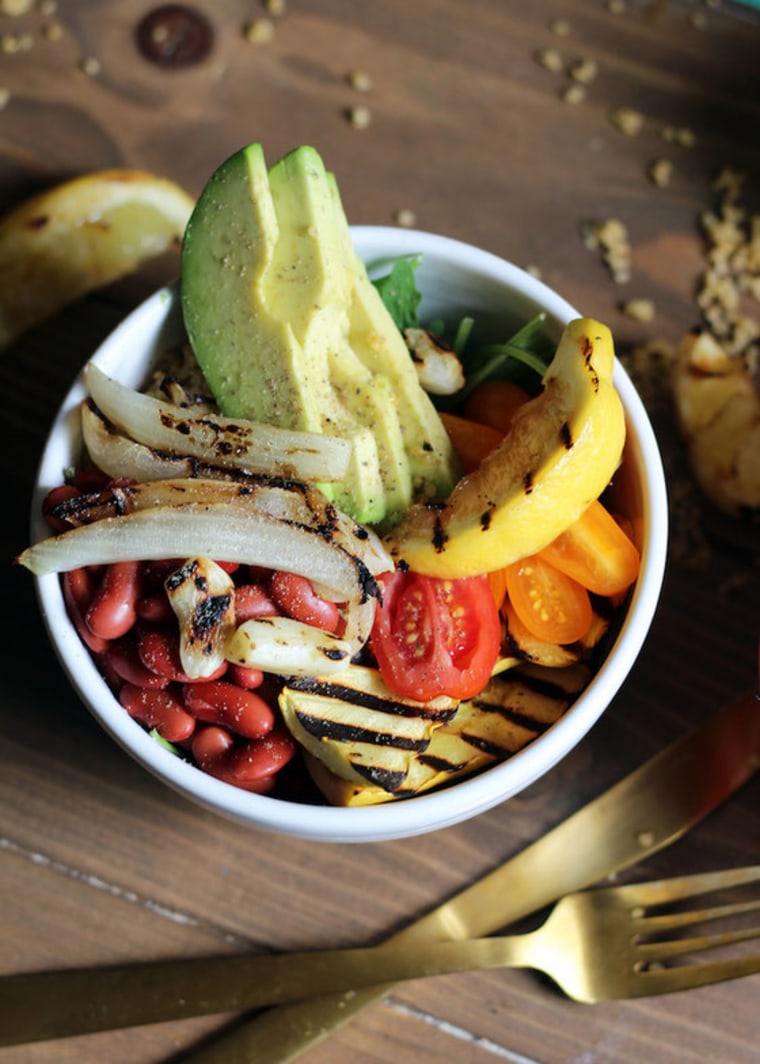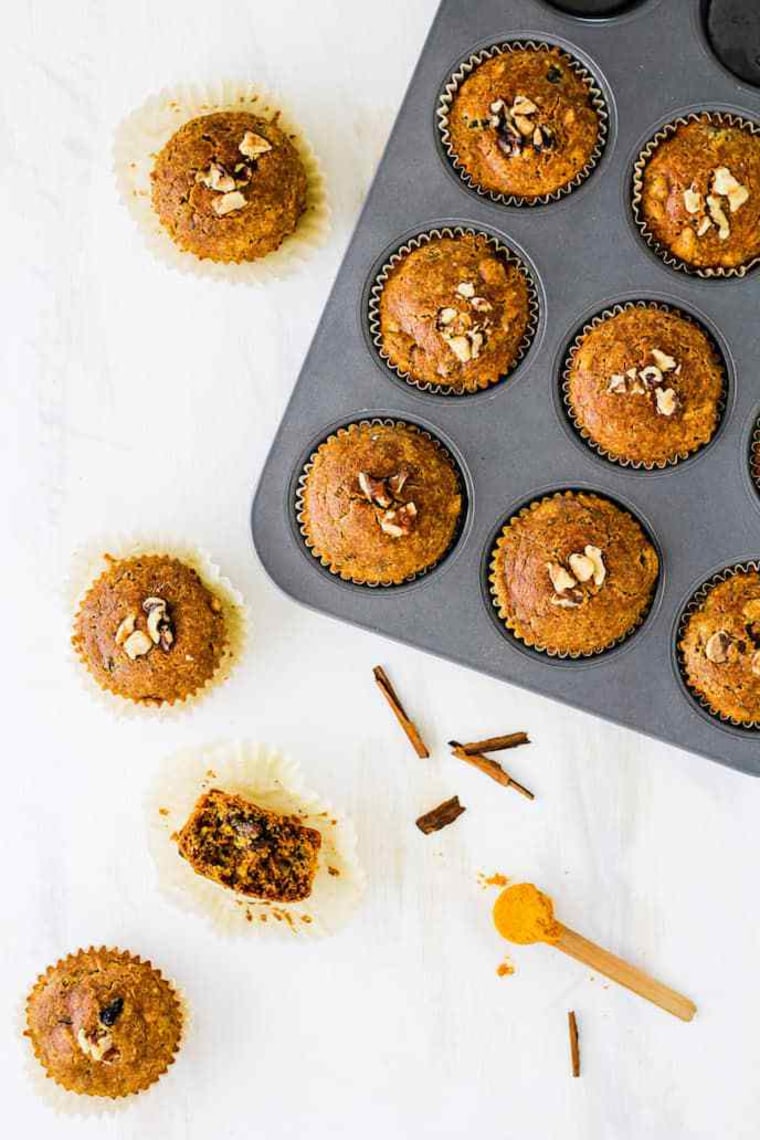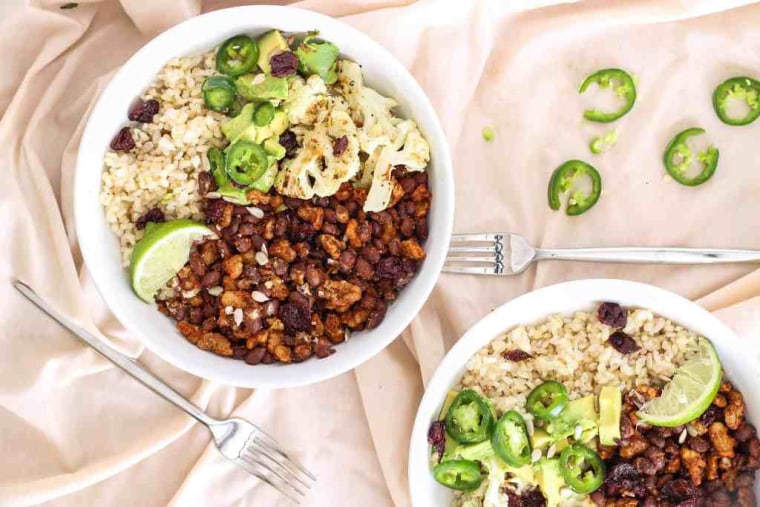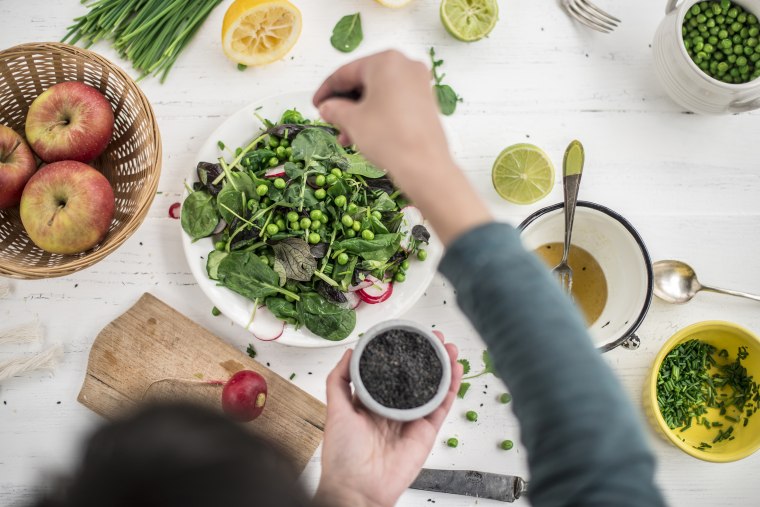We all have those foods that we love eating together: peanut butter and jelly, watermelon and feta, yogurt and berries. But it turns out there may be a reason to combine certain foods in one sitting beyond simply the taste.
How you combine foods can majorly impact the benefit you get from them: increasing the absorption of important nutrients and boosting the effectiveness of antioxidants. See which surprising food combos nutritionists recommend the most.
1. VITAMIN C AND PLANT-BASED IRON
To best absorb non-heme iron, aka plant-based iron, you need to give it a little boost by pairing it with a source of vitamin C. The vitamin C helps break the iron down into a form that the body can more easily absorb. It’s not enough to eat a daily diet that contains both nutrients — absorption of the iron will be much greater if the nutrients are paired in a single meal, according to research published in the American Journal of Clinical Nutrition. Add a squeeze of lemon or orange juice to a spinach salad, or toss diced apples into a lentil dish.

2. TOMATOES AND OLIVE OIL
In each red gem of a tomato, you’ll find lycopene, an incredible disease-fighting antioxidant. Lycopene may help prevent prostate cancer, for starters. “Cooking the tomatoes, as well as serving them with a bit of olive oil, has shown to enhance the body’s absorption of the photochemical,” says Joan Salge Blake, EdD, RDN, a clinical associate professor of nutrition at Boston University. Whip up a tomato sauce with olive oil, or drizzle oil onto baked tomatoes. Or combine the ingredients in a summer grain bowl or a tomato naan pizza.

3. TURMERIC AND BLACK PEPPER
Spicy stir-fry, anyone? “Turmeric has been used as a flavoring agent for centuries, but it also has powerful antioxidant and anti-inflammatory properties,” says Stephanie McKercher, RD, a culinary nutritionist in Denver, Colorado. The spice can help relieve symptoms of arthritis and may also benefit kidney health, according to a review study published in Redox Biology. While there haven't yet been enough human studies to fully understand how it works, preclinical studies show a slew of promising benefits that make it worthwhile to integrate a little turmeric into your diet. “Black pepper makes the beneficial compounds in turmeric more bioavailable, so I like to combine both spices in one dish for maximum benefit,” says McKercher. “They happen to taste delicious together, too — I use both in my recipe for golden milk muffins.”
4. VITAMIN D AND CALCIUM
This vitamin-and-mineral combo will help keep your bones healthy. “Vitamin D helps bring in more calcium from the foods you eat and the supplements you take,” says Ginger Hultin, RD, a Seattle-based spokesperson for the Academy of Nutrition and Dietetics. “The two work together because the active vitamin D form causes a cascade of effects that increases the absorption of dietary calcium in the intestines. To get this pairing right, eat foods offering vitamin D, such as salmon, tuna, egg yolks or fortified foods like milk and non-dairy beverages such as soymilk and orange juice. Eat a variety of calcium-providing foods, including collard greens, broccoli, dried figs, oranges and dairy foods.”
5. COMPLIMENTARY PROTEINS
Here’s good reason to eat a variety of protein sources: Only some foods contain all the essential amino acids your body needs. “These protein sources, or complete proteins, are often obtained from animal products like meat, poultry, fish, dairy and eggs,” says Kate Wilson McGowan, RDN, a dietitian in Brooklyn, New York. “But they can also be found in non-animal products such as soy foods. Other protein sources like nuts, legumes, grains, and vegetables are incomplete, meaning they lack one or more of the essential amino acids needed for growth and development. But by pairing incomplete proteins together, you can create a complete protein source.” Examples of these combos include rice and black beans, hummus and whole-wheat crackers, quinoa and corn, and whole-wheat bread and peanut butter. Don’t worry if you’re not pairing foods at every eating occasion, though. “You don't need to eat complementary proteins together at every meal,” McGowan says. “Aim to get a variety of proteins throughout the day, and you'll get ample amounts of each amino acid.”

6. BEANS OR CHICKPEAS WITH RICE
Besides the benefits of the complementary proteins in beans and rice, you’ll get unexpected perks from eating these foods together. “Beans and chickpeas are packed with protein and fiber, which makes them perfect for pairing alongside starchier foods like rice,” says McKercher. “Adding beans makes it easier for your body to regulate carbohydrates and helps prevent blood-sugar spikes and energy crashes. I like my chili lime Buddha bowls for a balanced lunch or dinner!”
7. FAT AND FAT-SOLUBLE VITAMINS
Your intestine absorbs certain vitamins — vitamin A, vitamin D, vitamin E and vitamin K — when they’re paired with a fat source. Getting enough of these vitamins and maximally absorbing them is important because deficiencies are connected with heightened risk of cancer and type 2 diabetes. If possible, make the fat source a largely unsaturated one, such as nuts, seeds, avocado, olive oil or olives. “One serving of sunflower butter provides healthy unsaturated fat, helping to absorb fat-soluble vitamins,” says Toby Amidor, MS, RD, author of Smart Meal Prep for Beginners. “Pair a sun butter and jelly sandwich with a glass of milk and your body will use the healthy fat from the sunflower butter to help absorb the fat-soluble vitamins A and D from the milk.” Other ideas: You’ll find vitamin A and vitamin K in leafy green veggies; vitamin A in orange and yellow veggies and tomatoes; and vitamin E in a variety of nuts and seeds, says Hultin.
WHAT A NUTRITIONIST WANTS YOU TO KNOW
- Bad nutrition advice dietitians want you to forget
- The best way to lose weight boils down to these three things
- What you need to know about going vegan
- What is healthier: natural sugar, table sugar or artificial sweeteners?
- The healthier pick: a hot dog or a hamburger?
Want more tips like these? NBC News BETTER is obsessed with finding easier, healthier and smarter ways to live. Sign up for our newsletter and follow us on Facebook, Twitter and Instagram.
